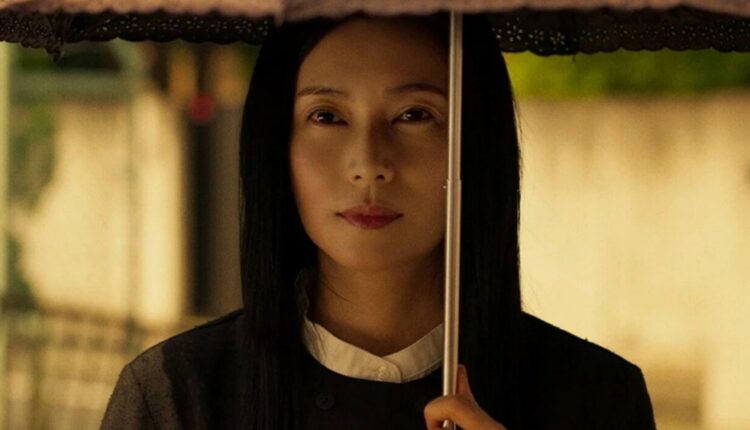There’s no denying that Takashi Miike’s “Sham” is dramatically effective. However, it may be one of the rare courtroom thrillers that is, at times, too effective for its own good. One would think there’s no such thing, but the movie’s engrossing visual and tonal language is all about seeding doubt, a promise on which Miike over-delivers, resulting in a tale that remains in morally gray territory long after it means to.
The film is based on a real 2003 court case — and a subsequent book by journalist Masumi Fukuda — in which a Japanese elementary school teacher was accused of physically and emotionally tormenting a student, who allegedly came close to suicide. The student’s mixed American heritage (by way of a great grandparent) was the alleged focus of racist remarks, which the boy’s mother would bring to light with the help of diligent reporters, when the school’s administrators failed to act. Foreknowledge of these events isn’t necessary before watching Miike’s telling, but the ways that Hayashi Mori’s screenplay remains tethered to reality ends up harming the film in the long run.
The real story features definitive conclusions, and leaves no loose ends in its pursuit of justice, delivered with a neat bow. “Sham,” however, is a movie that trades in uncertainties, with a structure initially akin to Akira Kurosawa’s “Rashomon.” Miike first lays out the inciting accusations through the courtroom testimony of the mother, Ritsuko Himuro (Ko Shibasaki), in a lengthy prologue that reveals the vicious behavior of teacher Seichii Yabushita (Go Ayano) towards her son Takuto (Kira Miura). Before long, it rapidly shifts gears in favor of an alternate telling from Seichii’s point of view (drawn from his own counter-testimony), which makes up the majority of the movie’s runtime.
The film initially paints Seichii as a monstrous figure, but the opposite holds true when events are told from his point of view. The teacher becomes a hapless victim in what appear to be highly improbable situations, orchestrated by a cartoonishly scheming Ritsuko to frame Seichii. The clash between these narrative extremes in a courtroom setting forces a closer inspection of the very nature of legal evidence, and the concept of reasonable doubt.
This thematic friction is best described as delightfully uncomfortable. Miike’s usual notions of outward violence (in movies like “Audition”) become entirely internal, and the struggle for certainty begins to feel emotionally volatile. The viewer’s morality practically becomes bifurcated: what one might believe is “right” in their gut might simultaneously start to seem entirely incorrect within legal parameters. Miike, through his judicious use of close-ups and gradual unfurling of information, begins to tilt the share of power between his characters in thrilling ways — which in turn forces the audiences to re-calibrate their own beliefs on the fly.
However, these ethically disorienting effects can only last so long. The film’s slavish dedication to its source material — the challenging of which would open its own can of worms — demands ignoring all potential complexity in favor of didactic conclusions. The movie practically teaches you to watch it with suspicion for much of its runtime, especially since its narrative unfolds through specific perspectives and courtroom proclamations. But the final catharsis that Miike presents is far too neat and linear for this approach.
The lead performances from Shibasaki and Ayano are riveting and powerfully operatic. The two actors essentially embody four different characters — they each play virtuous and repulsive versions of Ritsuko and Seichii — yielding in a film that demands it be seen through a lens of pure, subjective exaggeration, one way or another. And yet, there’s no moment when it pulls back from this mode of storytelling, even when it seems to make a concrete determination on which recounting has actually been objective all along, practically discarding its own visual lingua franca.
The result is a movie that, despite its emotional highs and challenging conundrums, moves towards more traditionally euphoric conclusions that can’t help but feel mawkish, as they’re entirely out of step with the preceding runtime. “Sham” works until it very suddenly doesn’t, in a manner that — ironically — makes you question the nature of everything you’ve just seen, as though its successes were accidental or illusory.


